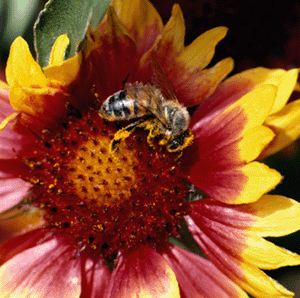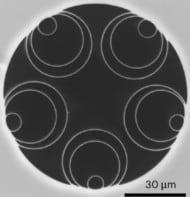A well-known myth says that scientists once proved that bumblebees should not be able to fly. The myth started from an over-simplified calculation on a napkin at a dinner party. But even detailed models of the flight of the bumblebee are limited because they are based largely on the motion of tethered bumblebees, which behave differently. Now Lijang Zeng of Tsinghua University in China and colleagues have devised a laser system that accurately measures the key parameter in the flight of any insect - its 'body vector' (Lijang Zeng et al 2001 Meas. Sci. Technol. 12 1886).

The apocryphal story about bees not being able to fly arose because the roughness and flexibility of their wings was neglected in a quick calculation. The wings of a bumblebee bend to create vortices that provide lift on both the upward and downward strokes, and a full analysis of the bee’s flight involves many factors: wing angle, wing deformation, aerodynamic and inertial forces on the wing, and so on. All of these parameters are expressed in terms of ‘body vector’ – that is, the exact orientation of the insect’s body.
Existing methods for measuring the body vectors of insects in free flight assume that the wings act symmetrically, but this only happens if the insect is flying in a straight line. To measure body vector more accurately, Zeng and colleagues developed technique that accounts for more realistic curved flight paths.
The team glued a sliver of glass weighing just 0.8 milligrams to the top of a bumblebee’s body, between its wings. The bumblebee was then allowed to fly freely inside a small clear box, illuminated from above by an array of 49 lasers. As the bumblebee changed direction and orientation, the laser beams bounced off the glass onto a trapezoidal screen suspended above the box.
Synchronized cameras above and at the side of the box monitored the position of the bumblebee and this allowed the team to calculate the angle of reflection of the laser light and then the body vector. Coupled with velocity and acceleration data provided by the cameras, the technique should allow biologists to model insect flight much more precisely. Using the new method, Zeng’s team found that the bumblebee’s body vector varied considerably, even as it flew in their small experimental chamber.



